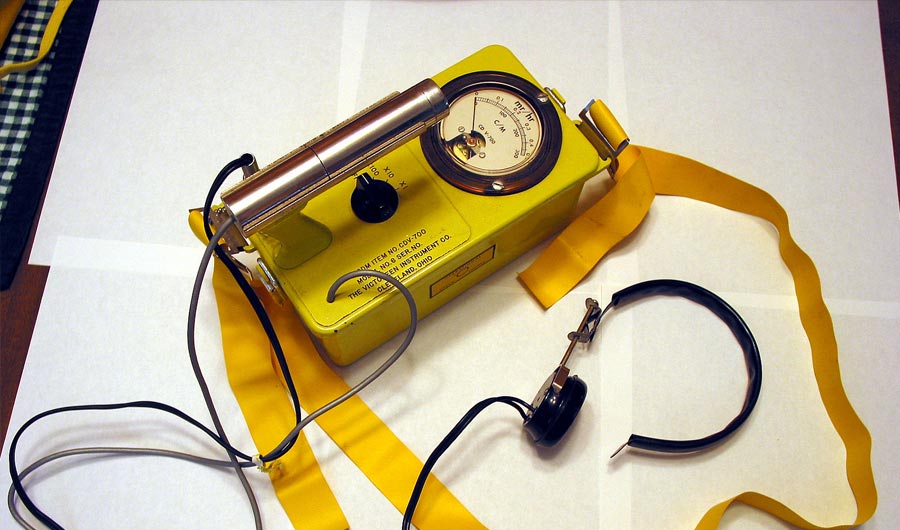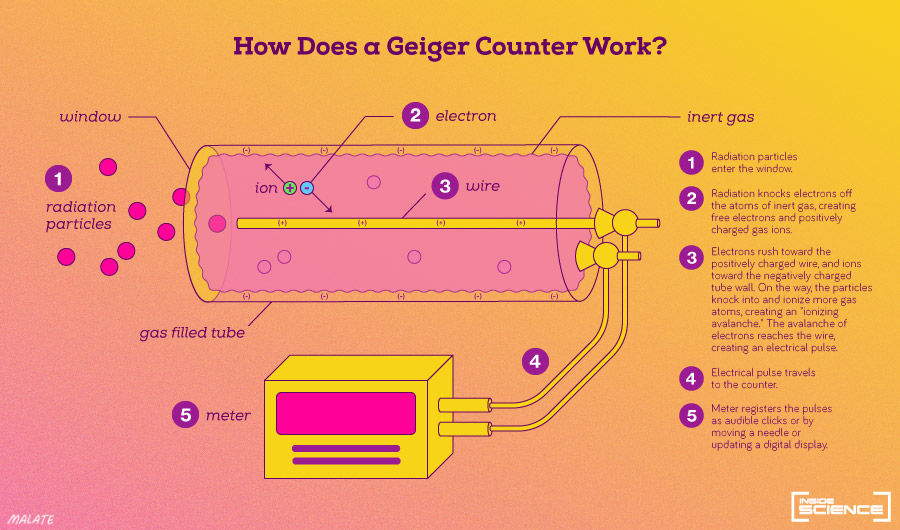Infographic: How a Geiger Counter Works
(Inside Science) -- From the menacing background chatter as workers handle contaminated debris in the TV series “Chernobyl,” to the telltale clicks that reveal the location of a sleeping Godzilla in the monster’s 1954 movie debut, rattling Geiger counters often add ominous notes to the soundtrack of radiation-themed stories. This Sept. 24 marks 75 years since the death of Hans Geiger, the German scientist most widely credited with inventing the device.
Radiation comes in many forms, and at the time of Geiger’s work, scientists were still figuring out a lot of the basics. One form of radiation is a tiny chunk of matter called an alpha particle. It contains two neutrons and two protons and is emitted by certain radioactive elements such as uranium and radium. In 1908, the young Geiger, working with renowned nuclear physicist Ernest Rutherford at the University of Manchester in England, built an electrical instrument that moved a needle every time an alpha particle entered the device. Around this time, the scientists also counted alpha particles by peering through a microscope in a dark room and noting every time an alpha particle collision lit up a thin layer of zinc sulfide. Rutherford wrote to a friend that “Geiger is a demon at the work of counting scintillations and could count at intervals for a whole night without disturbing his equanimity. I damned vigorously and retired after two minutes.”
In the 1920s, Geiger, then at the University of Kiel in Germany, worked with his graduate student Walther Müller to make his counter more sensitive, durable and portable. The improved device, called the Geiger-Müller counter, could detect additional forms of radiation, such as beta particles, which are electrons, and gamma rays. By that time, the design included all the essential elements of modern Geiger counters.
Geiger went on to use the device to confirm theories about how light interacts with matter and to observe cosmic ray showers. Read our infographic below to learn more about how Geiger counters work.
(Intro text: Catherine Meyers, Editor)



